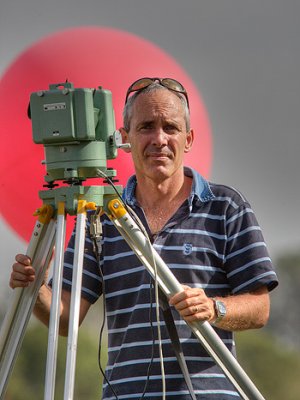
As Mother Nature unleashes her fury this storm season, a group of UQ researchers will brave the elements to collect crucial data for more accurate warnings in South-East Queensland.
UQ Associate Professor Hamish McGowan and his team, including Bachelor of Science Honours student Joshua Soderholm, plan to position themselves near Beaudesert to collect real-time data.
The new project marks the first time the researchers, from the School of Geography, Planning and Environmental Management, will be out in the field before, during and after a storm hits.
Last year the team analysed the super-cell thunderstorms that caused havoc in the Brisbane suburb of The Gap from UQ’s St Lucia and Gatton campuses.
The UQ research is being collated onsite for the Bureau of Meteorology to immediately access.
"The data will allow a greater understanding of the relationship between the pre-storm atmosphere and a storm’s evolution, direct impact areas and the weather it will produce," Mr Soderholm said.
“We’re collecting a very wide data set across as many storm days as possible, thereby allowing us to develop a climatology of thunderstorm events. We will then be able to better understand the relationship between pre-storm conditions and the ensuing thunderstorm weather.
“We will be down in an area we know has a high density of storms in South-East Queensland from a thunderstorm climatology perspective.”
On a day a storm is forecast, the team will travel to the research location and release radiosondes – small instrument packages attached to large helium-filled balloons – every two hours.
The technology will provide information on the ambient atmosphere in terms of temperature, humidity and wind speed and direction.
“The thrust of all this work is to try to better develop our predictive capability in terms of identifying what precursor conditions allow us to predict more accurately the kind of storms that are going to develop,” Dr McGowan said.
“For example, whether or not you are going to have a big super-cell thunderstorm or whether you are going to have a squall come through, a line of storms, that often passes through South-East Queensland in the spring.”
Dr McGowan said current storm warnings were typically broadcast 60-90 minutes before a storm hit.
“Those are the sort of time scales we’re working at rather than days ahead. We have got intentions to actually stay there and work through several storm events,” he said.
“The more and more people that decide to reside in South-East Queensland, then the greater the potential for severe impact on those urban environments in those communities.”
Media: Associate Professor McGowan (07 3365 6651), Mr Joshua Soderholm (0403 800 655) or Eliza Plant at UQ Communications (07 3365 2619).
Images: Karen Poole at The University of Queensland (07 3365 2753, k.poole@uq.edu.au)
.jpg)



